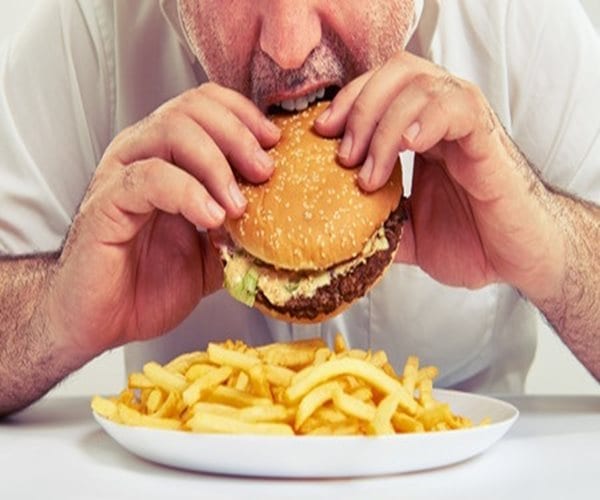Diets
Back Clinic Diets. The sum of food consumed by any living organism. The word diet is the use of specific intake of nutrition for health or weight management. Food provides people with the necessary energy and nutrients to be healthy. By eating various healthy foods, including good quality vegetables, fruits, whole-grain products, and lean meats, the body can replenish itself with the essential proteins, carbohydrates, fats, vitamins, and minerals to function effectively.
Having a healthy diet is one of the best things to prevent and control various health problems, i.e., types of cancers, heart disease, high blood pressure, and type 2 diabetes. Dr. Alex Jimenez offers nutritional examples and describes the importance of balanced nutrition throughout this series of articles. In addition, Dr. Jimenez emphasizes how a proper diet combined with physical activity can help individuals reach and maintain a healthy weight, reduce their risk of developing chronic diseases like heart disease, and ultimately promote overall health and wellness.

by Dr Alex Jimenez DC, APRN, FNP-BC, CFMP, IFMCP | Diets, Fitness, Pregnancy
Pregnant women who drink non-diet sodas during pregnancy are more likely to have kids who carry extra body fat by age 7, researchers say.
In the study of more than 1,000 mother-child pairs, each additional serving of sugary soda per day consumed in pregnancy was associated with higher increments of waist size and body mass in kids years later.
“Sugary beverages have been linked to obesity in children and adults,” said study author Sheryl Rifas-Shiman of Harvard Medical School in Boston.
Although past research has tied sodas and some fruit drinks to excess weight gain, obesity, metabolic syndrome and type 2 diabetes, few have looked at beverage intake during pregnancy, she and her colleagues write in Pediatrics.
“Childhood obesity is widespread and hard to treat,” Rifas-Shiman told Reuters Health by email. “So it’s important to identify modifiable factors that occur prenatally and during infancy so prevention can start early.”
The researchers recruited 1,078 women from among patients at eight obstetric offices affiliated with Atrius Harvard Vanguard Medical Associates in eastern Massachusetts.
The study team had in-person meetings with each woman at the end of her first and second trimesters, as well as during the first few months after her baby was born. In addition, kids were assessed in early childhood, around age 3, and in mid-childhood, around age 8. Mothers also completed mailed questionnaires every year for the child’s first six birthdays.
At all visits, researchers collected information about both parents and details of the household. During pregnancy, women answered questionnaires about what they typically ate and drank, including how much regular and sugar-free soda, fruit juice, fruit drinks and water they consumed each day.
At the mid-childhood visit, when kids were between ages 6 and 11 years, the research team measured each child’s height, weight, waist circumference and skinfold thickness. With these measurements, they calculated body fat percentage and body mass index (BMI), a measure of weight relative to height.
When researchers looked at data gathered during pregnancy, they found that more than half of mothers had consumed more than half a serving a day of non-diet soda during pregnancy, and nearly 10 percent had consumed two or more servings a day.
Mothers who drank more sugary drinks during pregnancy tended to be younger, had higher prepregnancy BMI, lower education, lower income, shorter breastfeeding times and were more likely to have smoked during pregnancy.
About one quarter of the children were overweight or obese by mid-childhood, and BMI, waist circumference and skinfold thickness were highest among kids whose mothers drank at least two servings of sugary drinks per day.
Only regular sodas were associated with this difference. Juice, diet soda and water consumed during pregnancy weren’t linked to a higher BMI score in kids. The research team also didn’t see differences based on the mother’s weight, race or ethnicity, the child’s gender or the amount of soda children themselves drank.
“I was surprised that maternal intake seemed to be more important than child intake,” Rifas-Shiman noted.
In the future, she and colleagues plan to study the long-term effects of efforts to reduce sugary beverage intake during pregnancy. They’re now using new methods to analyze when children’s intake of sugary beverages matters the most for their weight and health.
“I was struck that the differences in children’s body composition were seen in relation to intake levels that appear unremarkable, even less than one serving per day,” said Sian Robinson of the University of Southampton in the UK, who wasn’t involved in the study.
“We need to know more about the long-term effects of maternal nutrition on offspring health,” she told Reuters Health by email. “Few intervention studies in pregnancy have longer-term follow-up data to describe the effects on children’s body composition.”
Several of these intervention studies have been completed recently, Robinson added, and that follow-up data will be available soon.
“The links between sugar-sweetened beverages and obesity are well-established,” she said. “But this new data suggests mothers’ consumption is important and has public health relevance.”

by Dr Alex Jimenez DC, APRN, FNP-BC, CFMP, IFMCP | Diets, Fitness
It’s hard to eat right all the time, but making small improvements by choosing healthier foods now and then may significantly boost one’s chances of living longer, said a US study Wednesday.
The report in the New England Journal of Medicine is the first to show that improving diet quality over at least a dozen years is associated with lower total and cardiovascular mortality.
Researchers at Harvard University tracked dietary changes in a population of nearly 74,000 health professionals who logged their eating habits every four years.
Researchers used a system of diet-quality scores to assess how much diets had improved.
For instance, a 20-percentile increase in scores could “be achieved by swapping out just one serving of red or processed meat for one daily serving of nuts or legumes,” said a summary of the research.
Over the 12-year span, those who ate a little better than they did at the start — primarily by consuming more whole grains, fruits, vegetables, and fatty fish — saw an eight to 17 percent lower risk of dying prematurely in the next 12 years.
Those whose diets got worse over time saw a higher risk of dying in the next 12 years of follow-up, on the order of a six to 12 percent increase.
“Our results highlight the long-term health benefits of improving diet quality with an emphasis on overall dietary patterns rather than on individual foods or nutrients,” said senior author Frank Hu, professor and chair of the Harvard Chan School Department of Nutrition.
“A healthy eating pattern can be adopted according to individuals’ food and cultural preferences and health conditions,” he added.
“There is no one-size-fits-all diet.”

by Dr Alex Jimenez DC, APRN, FNP-BC, CFMP, IFMCP | Diets, Fitness
The U.S. is one of the world’s laziest countries, according to a new Stanford University study that used smartphone measurements of the number of steps taken by people in 46 countries.
The study, published in the journal Nature, included 700,000 participants and was “1,000 times larger than any previous study on human movement,” co-leader and Stanford bioengineering professor Scott Delp said, the BBC reported.
Countries with the highest average number of steps walked included China, Ukraine, Japan, and No. 1 Hong Kong, with 6,880 steps walked per day on average, USA Today reported.
The U.S. ranked in the bottom half of countries represented, with 4,774 steps walked per day, just below the worldwide average of 4,961 steps. Indonesia had the least steps walked with 3,513 per day on average, USA Today reported.
The study found that countries where people walked a similar amount of steps each day had lower rates of obesity, whereas countries where some people walked a lot and others walked very little had higher rates of obesity. The U.S. falls into the latter category, with high levels of what the study called “activity inequality.”
The study analyzed a total of 68 million days’ worth of data and tracks people’s activity over longer periods of time than previous studies, the BBC said.
Women averaged about 1,000 fewer steps than men in the U.S., and suburban areas reported fewer steps on average than urban, city areas that are more pedestrian-friendly.
Researchers hope the data might help design towns, cities, and neighborhoods that encourage more physical activity.

by Dr Alex Jimenez DC, APRN, FNP-BC, CFMP, IFMCP | Diets, Fitness
Western diets, high in sugar and fat, cause liver inflammation, especially in males, according to a new animal study in The American Journal of Pathology. Inflammation was most pronounced in males that lacked farnesoid x receptor (FXR), a bile acid receptor.
The study also found that probiotics may prevent and treat the condition, keeping it from advancing to liver cancer.
“We know the transition from steatosis, or fatty liver, to steatohepatitis — inflammation in the fatty liver — plays a crucial role in liver injury and carcinogenesis,” said lead investigator Yu-Jui Yvonne Wan, Ph.D., Professor and Vice Chair of the Department of Pathology and Laboratory Medicine at UC Davis Health.
“Because the liver receives 70 percent of its blood supply from the intestine, it is important to understand how the gut contributes to liver disease development,” Wan said.
“Our data show that diet, gender, and different antibiotic treatments alter the gut microbiota as well as bile acid profile and have different effects on liver inflammation,” she said.
Wan used an FXR-deficient mouse model (FXR KO), which has become an important tool to better understand the role of diet and inflammation in the development of liver diseases, including cancer, because patients with cirrhosis or liver cancer also have low FXR levels.
Other studies have found that mice deficient in FXR spontaneously develop liver problems and tumors even when they are fed a normal diet.
In this study, FXR-deficient mice as well as wild mice were fed either a Western diet or a matching control diet for 10 months. Both Western diet-fed wild-type mice and control diet-fed FXR KO mice accumulated fat in the liver, which was more severe in males than females.
The study suggested that antibiotics might help block inflammation in control mice, but not in the FXR KO mice fed a Western diet. It also indicated that probiotics might also deter some of the inflammation.
“Our results suggest that probiotics and FXR agonists hold promise for the prevention and treatment of hepatic inflammation and progression into advanced liver diseases such as cancer,” Wan said.
A recent Australian study found that zinc may be a major key in fighting liver damage. An article published in Nature Communications found that zinc had the potential to be a simple and effective treatment against acute and chronic liver inflammation.
Other natural substances have been found to be effective against liver disease. A 2016 study conducted at the University of Southampton found that two cups of coffee a day reduced the risk of liver cirrhosis — scarring due to alcohol and viruses like hepatitis C — by 44 percent.

by Dr Alex Jimenez DC, APRN, FNP-BC, CFMP, IFMCP | Diets, Fitness
Australian researchers have found that exercising as a child could potentially counteract the damage of a high-fat diet later in life.
Carried out by a team from the Liggins Institute at the University of Auckland, the animal study looked at the effect of different diets and exercise programs on rats’ bone health and metabolism, focusing on the activity of the genes in bone marrow.
Rats were given either a high-fat diet and a wheel for extra exercise, a high-fat diet but no wheel, or a regular diet and no wheel.
High-fat diets in childhood are known to “turn up,” or increase, the activity of other genes that cause inflammation — the body’s natural self-protective response to acute infection or injury. Ongoing inflammation as a result of high-fat diets can damage cells and tissues, increasing the risk of obesity, heart disease, cancer among other conditions.
However, the team found that in the rats given a high-fat diet and an exercise wheel, the early extra physical activity caused inflammation-linked genes to be turned down, not turned up.
It appeared that exercise altered the way the rats’ bones metabolized energy from food, disrupting the body’s response to a high-calorie diet.
“What was remarkable was that these changes lasted long after the rats stopped doing that extra exercise — into their mid-life,” commented Dr Justin O’Sullivan, a molecular geneticist at the Institute.
“The bone marrow carried a ‘memory’ of the effects of exercise. This is the first demonstration of a long-lasting effect of exercise past puberty.”
“The rats still got fat,” he pointed out, “but that early extra exercise basically set them up so that even though they put on weight they didn’t have the same profile of negative effects that is common with a high fat diet.”
Dr O’Sullivan says that the results may help explain why even though obesity and diabetes are often linked, not everyone who is obese develops diabetes.
“It also strongly emphasizes the health benefits of exercise for children.”
The team are now carrying out further research, varying the exercise and looking at the even longer-term effects into old age in the hope of recreating their results.

by Dr Alex Jimenez DC, APRN, FNP-BC, CFMP, IFMCP | Diets, Fitness
While too much fat, especially of the “bad” variety, can lead to weight gain and health problems, a moderate amount of fat is essential to a healthy lifestyle.
Adding a little fat to your food, either through cooking or drizzling over salads, can help to fill you up and feel more satisfied after a meal, as well as boost health by helping the body absorb several fat-soluble vitamins.
However, with the recent news that coconut oil, long believed to be a “healthy” fat, should actually be avoided, many of us may be wondering once again which fats are the good ones.
Here we round up some advice from the University of Kentucky on which oils to keep on hand in the kitchen, and which to avoid.
Canola oil
This oil is the lowest in saturated fat, just 7 percent, while also containing high levels of monounsaturated fatty acids, which lower LDL and in recent years have been studied for potentially helping control blood glucose.
This oil is great for stir-frying, grilling, and replacing many solid fats — the ones to avoid — in recipes.
Olive oil
An important ingredient in the popular and healthy Mediterranean diet, olive oil is well-known for its many health benefits, including lower risk of death from cardiovascular disease and a reduced level of inflammation in the body.
Use extra-virgin and virgin olive oils for uncooked dishes, like salads, and choose refined olive oils for cooking as they are better at higher temperatures.
Peanut oil
High in monounsaturated (good) fat, peanut oil also contains vitamin E, an antioxidant that helps maintain a strong immune system, healthy skin and eyes, and helps with the formation of red blood cells.
Thanks to a high smoke point, this oil is ideal for frying, roasting and grilling.
Avocado oil
This oil is also high in monounsaturated fats and vitamin E, and also has a tasty but mild flavor, making it great to add cold onto salads.
It also has a high smoke point for those who prefer to cook with it. However, if avocado oil is too expensive or difficult to find, canola oil makes a good budget-friendly alternative.
And the oils to avoid
Saturated or “solid fats” should be consumed sparingly — these are the oils that are solid at room temperature such as coconut oil, butter, palm oil, beef tallow, and lard.
Because saturated fat contributes to a rise in the level of LDL cholesterol, also known as “bad” cholesterol, the AHA recommends that saturated fat should make up a maximum of 10 percent of total caloric intake for healthy Americans, and a maximum of 6 percent for those who need to lower cholesterol levels.

by Dr Alex Jimenez DC, APRN, FNP-BC, CFMP, IFMCP | Diets, Fitness
Coffee addicts and aficionados often say drinking the bitter liquid makes life worth living, but the habit may also help them live longer, according to two major international studies Monday.
Experts cautioned, however, that the US and European reports, published in the Annals of Internal Medicine, failed to show that coffee was truly the reason that many drinkers appeared to have longer lives.
Rather, the studies were observational in nature, meaning they showed an association between coffee-drinking and a propensity toward longevity, but stopped short of proving cause and effect.
The first study, led by the International Agency for Research on Cancer (IARC) and Imperial College London, examined more than half a million people across 10 countries in Europe.
Those who drank about three cups a day tended to live longer than non-coffee drinkers, said the study, which researchers described as the largest analysis of the effects of coffee-drinking in a European population.
“We found that higher coffee consumption was associated with a lower risk of death from any cause, and specifically for circulatory diseases, and digestive diseases,” said lead author Marc Gunter of the IARC, formerly at Imperial’s School of Public Health.
“Importantly, these results were similar across all of the 10 European countries, with variable coffee drinking habits and customs.”
The second study included more than 180,000 participants of various ethnic backgrounds in the United States.
It found benefits to longevity whether the coffee was caffeinated or decaffeinated.
Coffee drinkers had a lower risk of death due to heart disease, cancer, stroke, diabetes, and respiratory and kidney disease.
Those who drank one cup a day were 12 percent less likely to die compared to those who didn’t drink coffee.
Those who drank two or three cups per day saw an even higher 18 percent reduced risk of death.
“We cannot say drinking coffee will prolong your life, but we see an association,” said lead author Veronica Setiawan, an associate professor of preventive medicine at the Keck School of Medicine of University of Southern California.
“If you like to drink coffee, drink up! If you’re not a coffee drinker, then you need to consider if you should start.”
Coffee is one of the most popular drinks in the world. Some 2.25 billion cups are consumed every day.
Many prior studies have hailed the benefits of coffee-drinking, saying the beverage imparts anti-oxidants, may improve liver function and reduce inflammation.
But coffee may carry risks for some people, and pregnant woman and children are urged to avoid caffeine, which can be fatal in high doses.
A report from the IARC last year that said drinking very hot beverages — coffee, tea or otherwise — is one probable cause of cancer of the esophagus, the tube that runs from the throat to the stomach.
Experts who were not involved in the latest studies urged caution in interpreting the results.
For instance, the European study excluded people who had cancer, heart disease or diabetes, meaning it took a measure of people over 35 who were already generally healthy.
It also asked about coffee consumption just once, at the beginning, and did not update this figure over the span of the study, which included an average follow-up time of 16 years.
Finally, it found signs of a link between women who drank large amounts of coffee and a higher risk of cancer death, but downplayed this finding, saying it “may be spurious.”
The “conclusions will not lead me to start drinking coffee or to recommend people drink more coffee as a way to lessen their risks for heart disease,” said Naveed Sattar, professor of metabolic medicine at the University of Glasgow.
“I remain unconvinced that the link between coffee and heart disease represents a true cause and effect relationship and that coffee is truly protective, regardless of how large a study suggests this.”
Sattar said that one downside to the research is the fact that many people stop drinking coffee — or drink less of it — when they are ill, a “bias is very hard to fully overcome.”
David Spiegelhalter, a professor at the University of Cambridge, described the research as “huge in size and carefully done,” but nevertheless unable to prove cause and effect.
“If these estimated reductions in all-cause mortality really are causal, then an extra cup of coffee every day would on average extend the life of a man by around three months, and a woman by around a month,” he added.
“So perhaps we should relax and enjoy it.”







